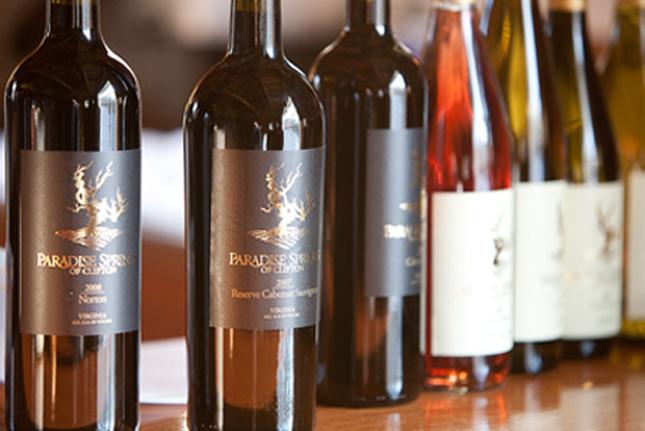Winemaking is one of the fastest-growing agricultural industries in the Mid-Atlantic area. Due to the rapid mutual progression of viticultural expertise and the knowledge and interest from the regional consumer in food and wine culture, it seems like new wineries are popping up everyday.
Just in case you were thinking about quitting your salaried day job and following your passion for Pinot to join the ranks of budding winemakers, I’d like to address a few of the many decisions and risks one must face when embarking upon such a venture. Winemaking is not for the faint of heart; it takes a unique balance of unflagging diligence and zen-like patience, not to mention a shockingly large sum of capital.
As any winemaker will tell you, it all starts in the vineyard. It is an oft-quoted adage that one can easily make bad wine out of good grapes, but great wine cannot be made without exceptional fruit. There are many horticultural nuances that contribute to a well tended versus poor quality vineyard, but the first principal of viticultural potential is that of site selection. Although wineries may grow their own estate vines or buy grapes from several different vineyards, it is up to the winemaker to find sites with the best climatic and topographical characteristics possible for the chosen variety of grape.
The most influential factors are soil composition and drainage, length of growing season, and elevation and slope of the plot. Here on the East Coast, we cannot hope to emulate the hot, dry California summers, so it is essential that a vineyard has ample water drainage and maximum sun exposure. This means careful scouting and analysis before deciding where to grow or buy grapes.
With a source of fruit procured, the beginner winemaker is just getting started. Once the grapes get to the cellar, many parts of the process require highly specified and expensive equipment. When starting a new winery, it can be tricky to decide how ambitiously to plan; it takes a few years of vine growth to achieve full yields and therefore to know exactly how much wine you’ll be producing. This will then determine the number of tanks and barrels, the size of the grape press, the type of bottling set-up, and the sheer amount of man power and accessories needed.
For example, the winery I work for in Pennsylvania used a 1.5-ton capacity press in the rainy 2009 vintage for about 27 tons of grapes; the next year, we were certainly glad we had upgraded to a four-ton press when a healthy harvest yielded over 60 tons. The doubled production also necessitated about 50 new barrels. Some wineries on a budget may opt for alternatives such as oak chips, but a vinicultural purist sticking to barrel aging must then decide between the less expensive but often more aggressive American Oak or spending up to $1,000 each for what many deem the more elegant effects of French Oak barrels.
Another tricky issue for any fermented product is that of temperature maintenance. Most yeasts require an environment over 60 degrees to get started; then individual tanks may need to be cooled down once fermentation gets rolling. In addition, barrels may need to stay at moderate temperatures to go through secondary malolactic fermentation, while wine in stainless steel holding tanks should be kept cooler. This can prove to be quite a challenge without well designed architecture and complex cooling and heating systems.
Aside from choosing material resources, there are thousands of other small decisions that determine the outcome of the wine — how long to age, how often to rack, how fine to filter, etc. — and most will depend on the winemaker’s philosophy and stylistic goals. Do you have a winery that makes a wide range of styles and varietals, or a more boutique operation that focuses its energy on only one or two grapes? Is your goal to make a solid product that most people can afford and enjoy, or will your line-up consist of highly refined wines in smaller production at inevitably higher prices?
A winery’s overarching mission statement will also determine the set-up of the tasting room and the kind of customer experience it will attempt to provide. Are events at the winery mostly upscale dinners with some quiet jazz for ambience, or do you regularly see a bluegrass band on the lawn with some casual catering? It is imperative for any business to determine the personality it hopes to exude to the consumer, but it is especially important in an industry where the competition is growing at such a rapid rate.
As we’ve seen on the West Coast, it is possible for multiple wineries in a small radius to all flourish concurrently if each is able to target a niche in the market and then work together with their counterparts to provide a diversified experience within the common vein of shared terroir and regionalism. Similarly in the past few years, we have seen the success of the Eastern wine industry increase with the number of wineries – a good sign on the path to becoming the world’s next wine destination.
Sip of Day
Paradise Springs Viognier
13.2 % Alc, $25
Paradise Springs is a brand new winery in the beautiful town of Clifton, VA. With two vintages under their belt and a new tasting room under construction, they seem to be taking all the necessary steps to increase in both quality and sales potential. This Viognier is surprisingly smooth and balanced, with notes of ripe white fruit on the front of the palate that provides body and richness without the residual sugar.


